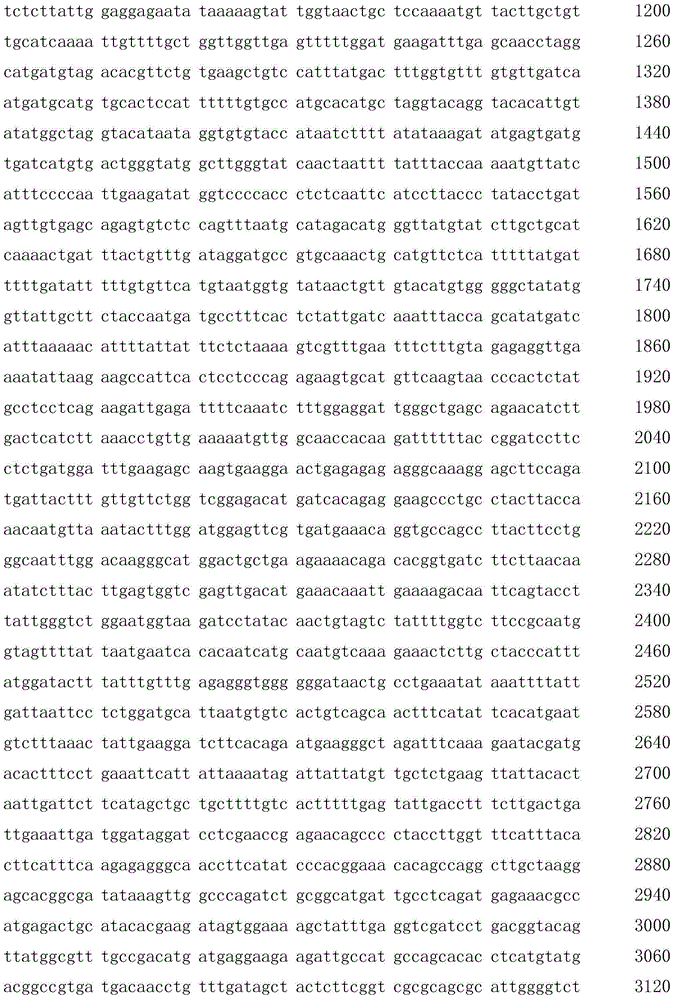Method for identifying or assisting in identifying linolenic acid content of soybean seeds and application thereof
An auxiliary identification, linolenic acid technology, applied in biochemical equipment and methods, microbial determination/inspection, DNA/RNA fragments, etc.
- Summary
- Abstract
- Description
- Claims
- Application Information
AI Technical Summary
Problems solved by technology
Method used
Image
Examples
Embodiment 1
[0045] Example 1. The Map-6017 SNP site is a single nucleotide polymorphism related to the linolenic acid content of soybean grains
[0046] 1. Basic information of Map-6017 SNP sites
[0047] The Map-6017 SNP site is located at position 3230 in the nucleotide sequence of Glyma.02G138100 gene (sequence 1), and its basic information is shown in Table 1.
[0048] Table 1. Basic information of Map-6017SNP SNP sites
[0049]
[0050] 2. Correlation analysis between Map-6017SNP genotype and linolenic acid content in soybean grains
[0051] 1. Preparation of Map-6017SNP probe set
[0052] According to the self-developed genome-wide SNP data set, the Map-6017SNP loci were screened and the Map-6017SNP probe set was artificially synthesized:
[0053] Probe 1: ACTTCGTCAGTAACGGACGGATTCTTGGCGGCAGCCCA (sequence 2 in the sequence list);
[0054] Probe 2: GAGTCGAGGTCATATCGTGGATTCTTGGCGGCAGCCCG (sequence 3 in the sequence list);
[0055] Probe 3: AAATGTATTCTTGAGCCTTTCTTTGGACCAGAGCACGGGTAGTTTGTCTGCCTATAGTGA...
PUM
 Login to View More
Login to View More Abstract
Description
Claims
Application Information
 Login to View More
Login to View More - R&D
- Intellectual Property
- Life Sciences
- Materials
- Tech Scout
- Unparalleled Data Quality
- Higher Quality Content
- 60% Fewer Hallucinations
Browse by: Latest US Patents, China's latest patents, Technical Efficacy Thesaurus, Application Domain, Technology Topic, Popular Technical Reports.
© 2025 PatSnap. All rights reserved.Legal|Privacy policy|Modern Slavery Act Transparency Statement|Sitemap|About US| Contact US: help@patsnap.com



